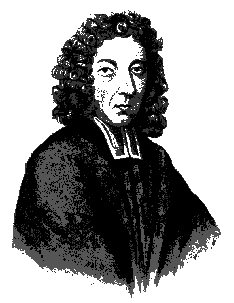Contents
| « Prev | Benjamin Keach | Next » |
Benjamin Keach
Horse-lie-down, Southwalk

(from Spurgeon’s original Autobiography (4 volume edition). Scanned by P. Johnson, CA)
Keach originated from Buckinghamshire and worked as a Tailor. He was baptized at the age of 15 and began preaching at 18. He was the minister of the congregation at Winslow before moving in 1668 to the church at Horse-lie-down, Southwark where he remained for 36 years as pastor. It was as representative of this church that Keach went to the 1689 General Assembly and subscribed the 1689 London Baptist Confession of Faith. The signing of the confession was no mute doctrinal assent on the part of the church, for in the same year they entered into a Solemn Covenant which reflects, at the practical and congregational level, some of the doctrines of the confession. There was a secession from Horse-lie-down in 1673 and the Old Kent Road congregation was formed. From this congregation eventually came the New Park Street Church where C. H. Spurgeon became the Pastor, later moving to the new location at the Metropolitan Tabernacle. Spurgeon republished the 1689 London Baptist Confession of Faith for use in the congregation (see What is a Confession of Faith?).
Keach wrote 43 works, of which his “Parables and Metaphors of Scripture” may be the best known. He wrote a work entitled “A Child’s Instructor” which immediately brought him under persecution and he was fined and pilloried in 1664. He is attributed with the writing of a Catechism commonly known as “Keach’s Catechism”, although it is most likely that the original was compiled by William Collins. Keach is also know to have promoted the introduction of hymn singing in the churches. Keach was one of the seven men who sent out the invitation to the 1689 General Assembly.
| « Prev | Benjamin Keach | Next » |